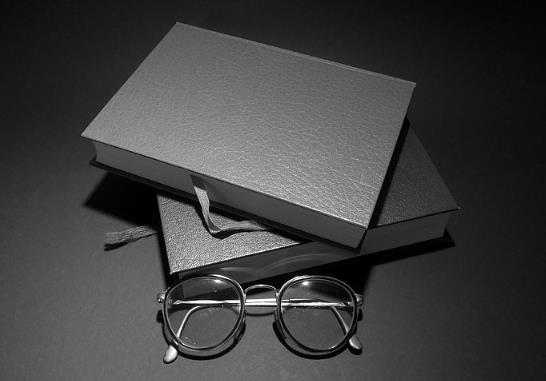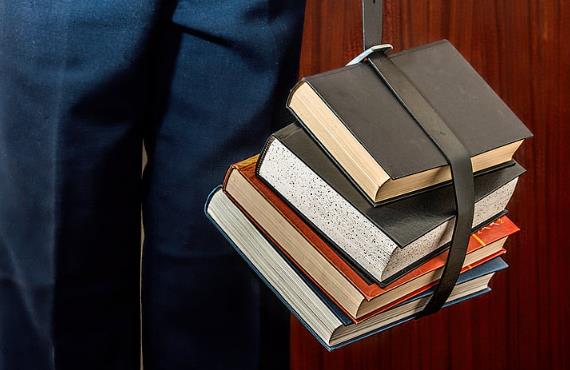本文主要针对夫子庙用英文怎么讲和夫子庙英语等几个问题进行详细讲解,大家可以通过阅读这篇文章对夫子庙用英文怎么讲有一个初步认识,对于今年数据还未公布且时效性较强或政策频繁...
英语口语

夫子庙 The Shrine of Confucius 或 The Confucian Temple 中山陵 The Zhongshan Cemetery雨花台烈士纪念馆 Yuhuatai Memorial of the Cival War Heroes科技馆 New Technology Museum
Confucius Temple is located in Gongyuan Street on the North Bank of Qinhuai River in Zhonghua Gate, Nanjing City, Jiangsu Province.
It is a place to worship and sacrifice Confucius. In the first year of Jingyou in the Northern Song Dynasty (1034 A.D.), xuanwang temple was built here.
In the early period of the Southern Song Dynasty, it was destroyed by the fire and war. During the period of Shaoxing, it was rebuilt to build the Kangfu school and the imperial examination hall Gongyuan.
There is Mingde hall in the school. The hall was originally written by Wen Tianxiang, a hero of Wu nationality in the late Southern Song Dynasty. Zeng Guofan in the Qing Dynasty was changed to seal script.
Temple of Confucius or Confucian Temple is a temple devoted to the cult of Confucius and the sages and philosophers of Confucianism. Confucian temples are variously known as Confucian Temples (孔庙), Temples of Literature or Culture (文庙), or Temples of the Sage (圣庙). Some are also known as "Fuzi Miao" (夫子庙), after Confucius's unLatinised Chinese name: "Kong Fuzi" (孔夫子) or "Master Kong".
History
The largest and oldest Temple of Confucius is found in Confucius's hometown, present-day Qufu in Shandong Province. It was established in 478 BCE, one year after Confucius's death, at the order of the Duke Ai of the State of Lu, who commanded that the Confucian residence should be used to worship and offer sacrifice to Confucius. The temple was expanded repeatedly over a period of more than 2,000 years until it became the huge complex currently standing.
The development of state temples devoted to the cult of Confucius was an outcome of his gradual canonisation. In 195 BC, Han Gao Zu, founder of the Han Dynasty (r. 206–195 BCE), offered a sacrifice to the spirit of Confucius at his tomb in Qufu. Sacrifices to the spirit of Confucius and that of Yan Hui, his most prominent disciple, began in the Imperial University (Biyong) as early as 241.
In 454, the first state Confucian temple was built by the Liu Song dynasty of south China (420 to 479). In 489, the Northern Wei constructed a Confucian temple in the capital, the first outside of Qufu in the north. In 630, the Tang dynasty decreed that schools in all provinces and counties should have a Confucian temple, as a result of which temples spread throughout China. Well-known Confucian shrines include the Confucian Temple in Xi'an (now the Forest of Steles), the Fuzi Miao in Nanjing, and the Confucian temple in Beijing, first built in 1302.
In addition to Confucian temples associated with the state cult of Confucius, there were also ancestral temples belonging to the Kong lineage, buildings commemorating Confucius's deeds throughout China, and private temples within academies.
Structure
Most Confucianist temples were built in Confucian schools, either to the front of or on one side of the school. The front portal of the temple was called the Lingxing Gate (棂星门). Inside there were normally three courtyards, although sometimes there were only two. However, the complex in Qufu has nine courtyards. The main building, situated in the inner courtyard with entry via the Dachengmen (大成门), was usually known as the Dachengdian (大成殿), variously translated as "Hall of Great Achievement", "Hall of Great Accomplishment", or "Hall of Great Perfection". This hall housed the Confucius Ancestral Tablet and those of other important masters and sages. In front of the Dachengdian was the Apricot Pavilion or Xingtan (杏坛). Another important building was the Shrine of the Great Wise Men (Chongshengci 崇圣祠), which honoured the ancestors of Confucius.
Unlike Daoist or Buddhist temples, Confucian temples do not normally have images. In the early years of the temple in Qufu, it appears that the spirits of Confucius and his disciples were represented with wall paintings and clay or wooden statues. Official temples also contained images of Confucius himself. However, there was opposition to this practice, which was seen as imitative of Buddhist temples. It was also argued and that the point of the imperial temples was to honour Confucius's teachings, not the man himself.
The lack of unity in likenesses in statues of Confucius first led Emperor Taizu of the Ming dynasty to decree that all new Confucian temples should contain only memorial tablets and no images. In 1530, it was decided that all existing images of Confucius should be replaced with memorial tablets in imperial temples in the capital and other bureaucratic locations, a rule still followed today. However, statues remained in temples operated by Confucius's family descendants, such as that in Qufu.
Worship
The state cult of Confucius centred upon offering sacrifices to Confucius's spirit in the Confucian temple.
A dance known as the Eight-Row Dance, consisting of eight columns of eight dancers each, was also performed. Originally this was a Six-Row Dance, as performed for the lesser aristocracy, but in 1477 Confucius was allowed the imperial honour of the eight-row dance since he posthumously received the title of king.
In addition to worshipping Confucius, Confucian temples also honoured the "Four Correlates" (四配), the "Twelve Philosophers" (十二哲), and other disciples and Confucian scholars through history. The composition and number of figures worshipped changed and grew through time. Since temples were a statement of Confucian orthodoxy, the issue of which Confucians to enshrine was a controversial one.
By the Republican period (20th century), there were a total of 162 figures worshipped. The Four Correlates include Yan Hui, Zeng Shen, Kong Ji, and Mencius. The Twelve Philosophers are Min Zijian, Ran Boniu, Zhong Gong, Cai Wo, Zi-gong, Ran You, Zi-Lu, Zi-You, Zi-Xia, Zi-Zhang, You Ruo, and Zhu Xi. A list of disciples of Confucius and their place in the Confucian temple can be found at Disciples of Confucius.
Van Mieu, VietnamConfucian temples outside China
With the spread of Confucian learning throughout East Asia, Confucian temples were also built in Vietnam, Korea, and Japan. Starting in the 18th century, some were even built in Europe and the Americas. At their height, there are estimated to have been over 3,000 Confucian temples in existence.
The earliest recorded Confucian Temple in Vietnam is the Temple of Literature or Van Mieu in Hanoi, established in 1070. After 1397, with the construction of schools throughout Vietnam under the Tran, Confucian temples began to spread throughout the country. Well known Confucian temples were built in Hue, Hoi An, Hai Duong, and An Ninh.
Outside China, the largest number of Confucian temples is found in Korea. Temples were first built during the Goryeo period. In the time of Yi Seonggye, it was decreed that Confucian temples should be built in all areas of the nation. Although Chinese models were followed, variations in layout and construction were common, such as the building of schools in front of temples. Korea also added its own scholars (the eighteen scholars of the East) to the Confucian pantheon.
Historically, Korea had a total of 362 temples devoted to the cult of Confucius. After World War II and the division of the country, those in the north were converted to other uses. However, many of the 232 temples in the south continued their activities. In addition to temples devoted to the cult of Confucius, the Republic of Korea also has twelve Confucian family temples, two temples in private schools, and three libraries.
Confucian temples (孔子庙 kōshi-byō) were also widely built in Japan, often in conjunction with Confucian schools. The most famous is the Yushima Seido, built in 1630 during the Edo period as a private school connected with the Neo-Confucianist scholar Hayashi Razan. Originally built in Shinobi-ga-oka in Ueno, it was later moved to Yushima (Ochanomizu) by the Tokugawa Shogunate and reopened as a school of Confucianism to spread the teachings of the Hayashi school.
Other well known Confucian temples are found in Nagasaki, Bizen (Okayama prefecture), Taku (Saga prefecture), and Naha (Okinawa prefecture).
Confucian temples are also found in Indonesia, where they are often known as "Churches of Confucius" as Confucianism is a recognised religion in that country. The largest and oldest is the Boen Bio in Surabaya, originally built in the city's Chinatown in 1883 and moved to a new site in 1907. There are reportedly more than 100 Confucianist litang (礼堂, halls of worship) throughout Indonesia.
以上就是本文夫子庙用英文怎么讲的全部内容,关注博宇考试网了解更多关于文夫子庙用英文怎么讲和英语口语的相关信息。
本文链接:https://bbs.china-share.com/news/181372.html
发布于:博宇考试网(https://bbs.china-share.com)>>> 英语口语栏目
投稿人:网友投稿
说明:因政策和内容的变化,上文内容可供参考,最终以官方公告内容为准!
声明:该文观点仅代表作者本人,博宇考试网系信息发布平台,仅提供信息存储空间服务。对内容有建议或侵权投诉请联系邮箱:ffsad111@foxmail.com
英语口语
本文主要针对夫子庙用英文怎么讲和夫子庙英语等几个问题进行详细讲解,大家可以通过阅读这篇文章对夫子庙用英文怎么讲有一个初步认识,对于今年数据还未公布且时效性较强或政策频繁...
英语口语
如何恶补英语? 第一,要有词汇量,手机可以下载一个扇贝单词,有助于提升词汇量。 其次要提升口语,可以下载英语流利说,这个确实不错,可提升口语,也可以提高语法地运用能力。...
英语口语
接电话号码的英文? 接电话号码的英语是:answer the phone。 例句 He or she is unlikely to answer the phone, speak to anyone and do anything except sit and watch. 他/她不接电话号码、不跟任何人讲话、也不做任何事...
英语口语
本文主要针对能联机的背单词软件,七大奇迹用英语怎么说和奇迹英语背单词等几个问题进行详细讲解,大家可以通过阅读这篇文章对能联机的背单词软件有一个初步认识,对于今年数据还未...
英语口语
往年招远一中中考试录用公务员取成绩分数线? 往年年,招远市一中录取成绩分数线为505分,招远市一中,这是全市的一所重点中学,而且,也是辖区内的一所重点中学,辖区内全部优秀的学...